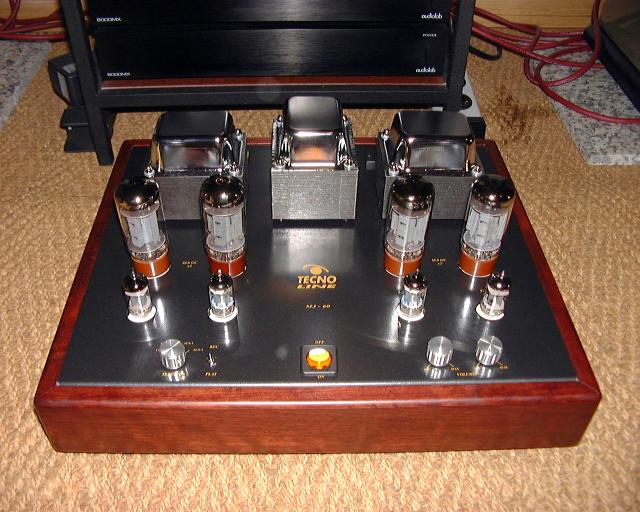
| [ Tecno Line MJ-60 amplifier ] |
Following one of the objectives of this site I'm very pleased to offer to you another article about a 100% hand-made amplifier made in Spain with excellent looks and build quality, the Tecno Line MJ-60. The first notice I had about this amplifier came from some audiophiles who wrote some posts in the Audio Nirvana forum about this product. After reading what they said, I contacted the designers of the MJ-60 in order to ask for an audition of the amplifier, always with the objective in mind to offer to the audiophiles detailed information about these kind of products. As you know I love tube amplifiers and I think that we have here in Spain very good products that are in the same league than others that come from abroad. This is, as are others that you have seen here, an example of what I'm saying. Write the MJ-60 name in your wish list.

The Tecno-Line MJ60 is a tube integrated amplifier made in Huesca, Spain by R.G.B. ELECTRÓNICA S.L, under this name. It is an ultralinear push-pull design working in class AB1 that delivers 30 watts per channel. The amplifier uses 4 Svetlana 6L6GC power tubes, 2 Sovtek 5751 (ECC83/12AX7) in the preamplifier section and 2 6189W JAN Philips ECG USA (ECC82/12AU7) as phase inverters.

The amplifier arrives at buyer's home very well packaged inside a cardboard box. Inside the box there're the amplifier, the eight tubes needed with a number written in each box that indicates the place of each one in the amp sockets and also a user's manual with all the required instructions to use the MJ-60. It is also included a sheet of paper with resumed instructions for nervous users that doesn't like to read the full manual.
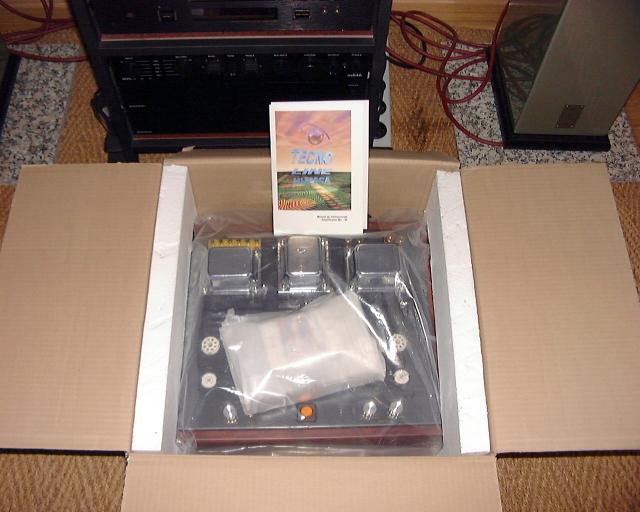

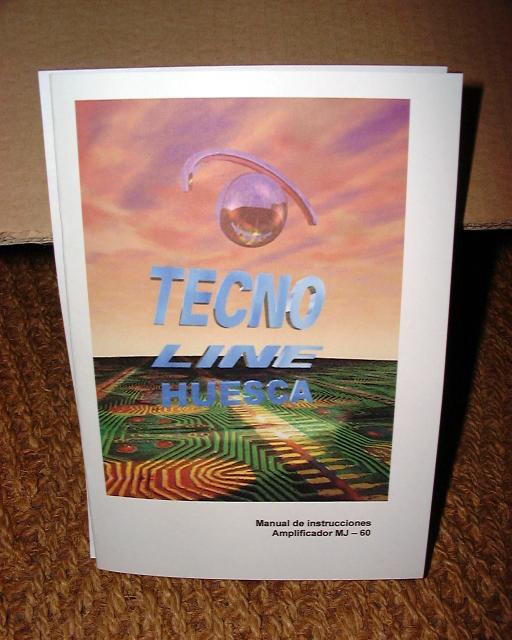
The first impresssion I had when I saw the MJ-60 was very good. As you can see in the pictures it is very well finished. The amps is built on a metallic chassis painted in grey with golden lettering. This chassis lays on a wood frame (bubinga in this version) that looks splendid, and that can be compared to some italian products that have been seen in these pages. The finishes are very good and this shows us the care used to build the MJ-60.
If we take a first look at the MJ-60 we can see some construction details. In the upper front side the amplifier is equipped with two Cermet metallic volume potentiometers (one per channel, so it isn't necessary a balance pot), a input selector (4 line-in plus a tape loop), a tape/play selector and an on/off button. The tube sockets are ceramic.
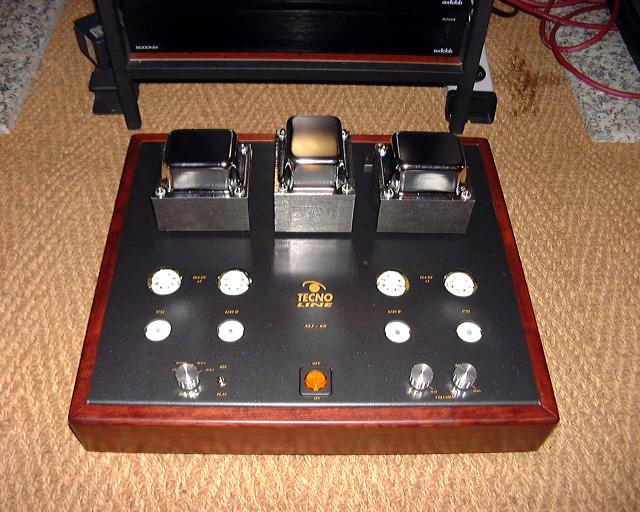
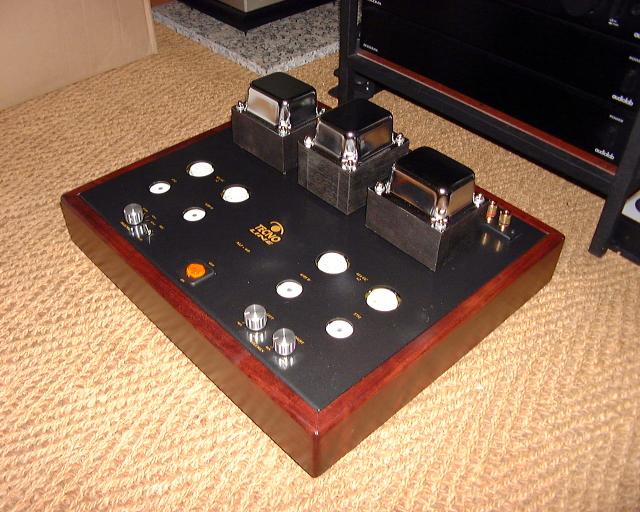
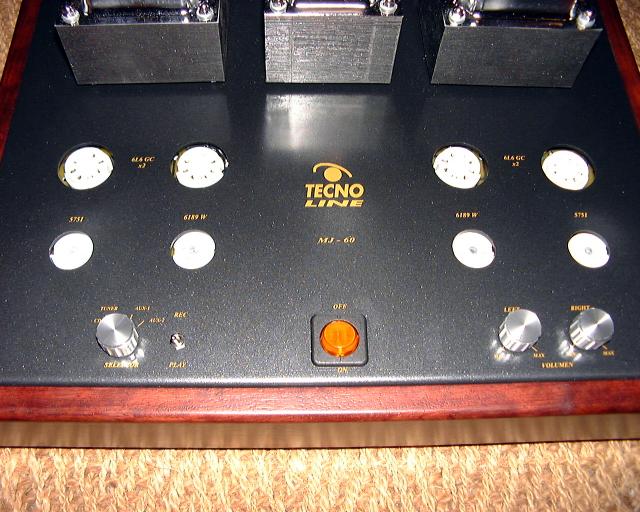
In the back side we find four gold-platted speakers binding posts, a 4ohm-8 ohm impedance selector, a group of six pairs of RCA plugs (including the tape loop), the power cord socket and a interesting CE plate with details about consume, voltage, etc. This plate is also an example of the care taken in the design of this amplifier. We can also see the three transformers that are custom made for this amplifier. During all this test the transformers have worked perfectly, reaching the working temperature and maintaining it while the amplifier was on. According the information given by the manufacturer, the transformers have been designed and built over-dimensioned in order to work without stress.
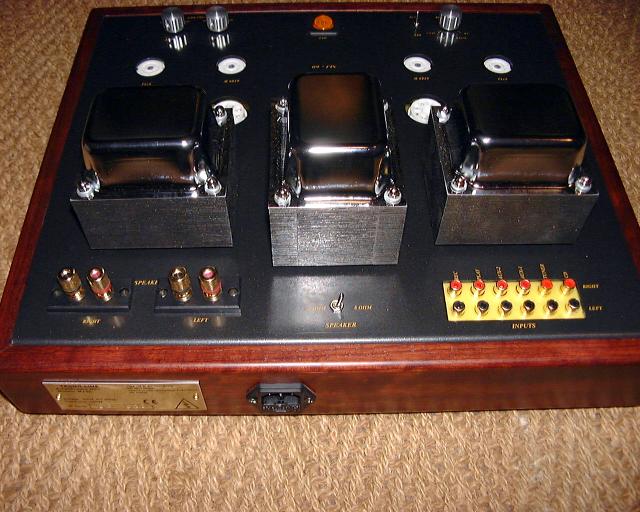
As usually with almost all the equipment we test, we did an internal inspection of the MJ-60 in order to know exactly what kind of amplifier we are talking about. I think that this is a very useful information for the user who buy equipment like this and in general terms for every audiophile because this, as I said before, helps to know in depth how the equipment is built. Maybe there're professionals in the audio world that consider that these kind of inspections are useless, but this is not a problem for Tecno-Line designers who were very receptive when I asked for their permission to open the amplifier. I thank them for allowing me to do it. I think that all the potential buyers of this amplifier would enjoy a lot with these details.
If we take a look inside the amplifier we could see that all the circuit is hand made on fiberglass boards. Other amplifiers that have been tested here use point-to-point soldering (no boards at all) but Tecno Line has chosen boards that are described in the company's web site as "fiberglass boards with double-side solderings and low noise layout". As you know this kind of circuits doesn't allow the users to do DIY, changing components,etc. In fact this doesn't means anything, it is only the choice of the designer. But if somebody wants to change something (caps, resitors, etc) you should know that it is posisble because there's enough room to do it (not too much, but some). As you can see in the pictures the designers of the MJ-60 have worked hard inside the amplifier, taking care of everything important. Components are of good quality and they do their job perfectly. Just as an example of this care is the fact that all the nuts are secured using some kind of fixing paste and that means that every single nut has been checked and secured.
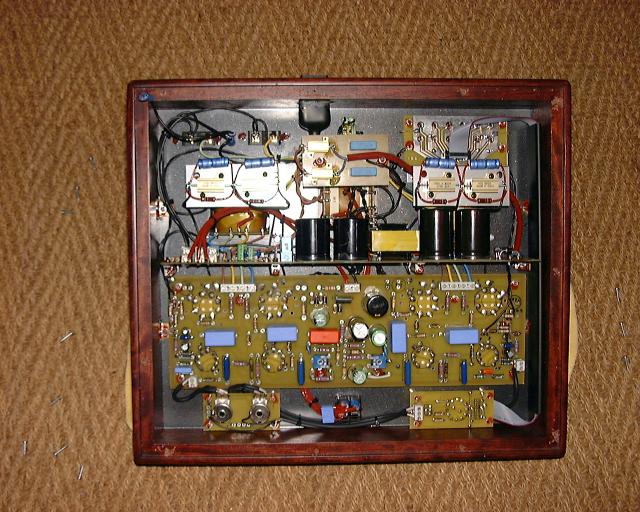
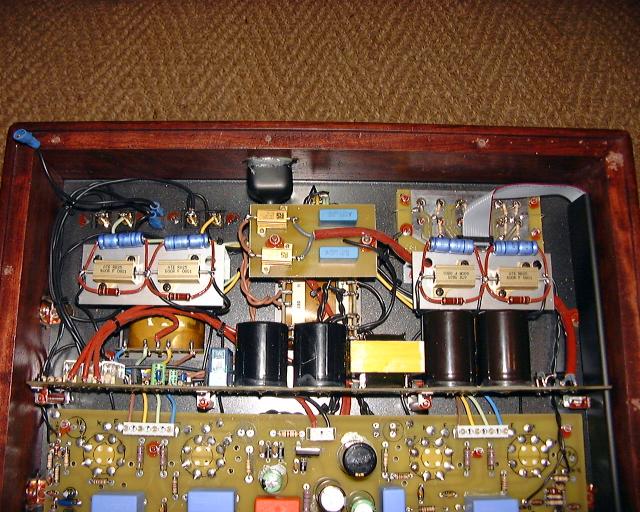
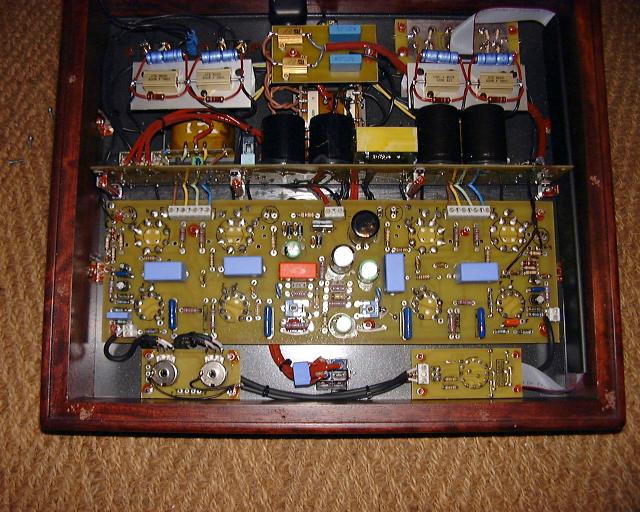
Let's talk about the sound. I used for this audition a TEAC VRDS10SE CD player as source, a pair of Monitor Audio Studio 20 SEC speakers, standard OFC cable for the speakers and Cardas 300B Microtwin interconnect for connecting the CD and the MJ-60. As I understand the MJ-60 is a very musical amplifier and it is a pleasure to listen to it. Typical tube sound, nice and relaxed, with soft bass (but not bad). Voices are really good. I would say that some of the tracks I have used in this audition have sounded better than ever before, specially those with vocals. A good example of that is Stacey Kent's voice that with this amplifier has sounded great. I talked with the manufacturer about these impressions and he told me that they have worked a lot to get this sound. I agree. The first contact was good with a compact sound. Maybe some listeners would find that MJ-60 too relaxed, but it is nice experience to listen to it. No fatigue at all. I know that many of you don't listen only to jazz trios and female singers, so I selected some tracks from Craig David's "Slicker than Average" (I don't listen to this kind of music). As always I must admit that tube amplifiers are a surprise and the MJ-60 surprised me again. The sound was more relaxed than with other designs I have heard but still very good, maybe with that less punch that we are talking about but very musical and with a nice sound for the listener. Maybe the MJ-60 is not build to play Craig David's music, but jazz or classical, althought if you want you can party with it. The manufacturer says that if you want that extra punch you can change the Svetlana tubes provided with JJ-Tesla but they also say that doing that maybe you will loose some richness in armonics. I followed the audition with my usual tracks that included Gloria Estefan (Por un beso), Gianmaria Testa (La traiettoria delle Mongolfiere), etc and suddenly something happened!. I realize that I was listening only "noises", not music! When I talk about "noises" I mean only little parts or aspects of the track, you know, a bass, a piano or a given instrument. I wasn't listening to the track itself as a whole, I wasn't listening to the music. And this amplifier is made for music. For a moment I tried to act as a listener and I must say that it is very useful and that sometimes is the best thing to do. The amp sounded fabulous! Any average audiophile would be delighted with the sound of this amplifier. ...and I was listening only "noises"! Another example of what I'm saying was "Devil may Care" by Diana Krall from her "Live in Paris" record that sounded fast, real and with good dynamics. By the way, at first moment I didn't liked this record (I don't like the last track she does, a pop song) but I must admit that there're some interesting tracks on it.
In my second session I continued listening to some of my test tracks. With Gloria Estefan's "Por un beso" the bass was less present that in other auditions, but again with a very good tone. For example, in the minute 3:30 when the wind and percussion sections began to play hard, the sound was a little bit more relaxed but still defined. With Claire Martin I could confirm that the voices sounded really great. Martin's voice was very present and clear in front. Maybe 30 watts can't be enough in some systems, but with my Studio 20 they didn't show any problem. Again with Stacey Kent and "Shall we dance?" I confirmed that this voice with this amplifier sounded very good. Real and very nice. Clear and with power when required. The same for the piano. I think that this amplifier has been carefully ear-tuned trying to find its own style. With the next three tracks, Baremboim-Mederos-Console "Mi Buenos Aires querido", Livingstone Taylor "Baker Street" and Gianmaria Testa "La traiettoria delle Mongolfiere" I missed a little bit some lack of punch. With Casandra Wilson's voice in "Love is blindness" and with the deep bass at the beginning of this track I also missed that deepness but the voice was still very good. With Norah Jone's record I heard her voice in front of me, very clear. I turned the volume up to 12:00 o'clock in both potentiometers and even at that high level the sound remainded very good. With "Seven years" track from Jones' record the guitar was maybe less present but again the voice was very good.
In this second audition I was again wondering if it was better to listen "noises" or to listen to the music. As you can imagine it is far better to listen to the music. Because this amplifier can give you very pleasant moments due to its musicality. Very tube biased, with that sweet and good tone typical from these vacuum devices. Delivering great voices and acoustical instruments. I liked it and I remember clearly its very nice sound. In addition to that it also looks great, outside and inside. So, the most important thing is that we can enjoy with another tube design made with care...but we also have another headache because we have another amplifier to consider before buying. But, well, in fact that is very good!
With a price of 1000 Euro, the Tecno Line MJ-60 is on of these designs that shows us that a tube amplifier it is not necesarely a expensive toy. It is very well built and it offers a very good sound to the audiophile who wants to enjoy listening to this kind of equipment. You should know that this price is an offer that only will be available for a short period of time. It will be increased (a little bit) in a future. Even with this increase, I believe that this amplifier must be considered by everybody interested in tube amplification.
Finally, I would like to thank Tecno Line designer's for allowing us to do this audition.